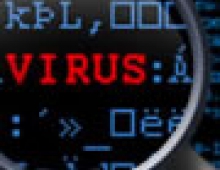
F-Secure Releases Its IT Security Wrap-Up for the Second Quarter of 2009
Highlights from the quarter include president Barack Obamas major speech on cybersecurity, the huge interest in the Conficker worm and social networking Sites, as Well as growth in PDF exploits, according to F-Secure.
Security service provides F-Secure today released its IT Security Wrap-Up Report for the second quarter of 2009. Key highlights include:
President Obama puts spotlight on cybersecurity
"So cyberspace is real. And so are the risks that come with it." These were the words of President Barack Obama on May 29, 2009 as he announced a new strategy to secure America's information and communications networks. F-Secure welcomes the fact that the Obama Administration is taking cybersecurity seriously on the national level and welcomes the new Cybersecurity Coordinator as a partner in the fight against eCrime. A strong advocate of establishing 'Internetpol,' F-Secure is committed to international cooperation and also encourages an increased focus on developing an offensive capability against online criminals.
Conficker worm
The threat landscape in the first half of 2009 was dominated by the Conficker worm, which has proved to be the most significant malware outbreak in recent years. The Conficker Working Groups successful collaboration is an example of effective international cooperation within the Internet security industry. Conficker created a great deal of media interest, especially around April 1, 2009, when the Conficker C variant was due to activate. In fact, the Conficker B variant spread most widely and infected millions of computers worldwide. The Conficker case once again demonstrated the emotional interest in virus outbreaks. While media interest has waned, the Conficker worm is still out there and there are still no answers as to what it was designed to do.
News, tweets and malware
Social networking websites have continued to grow in the first half of 2009, which makes them increasingly attractive targets. The first Twitter worm and spam outbreak occurred in April, created by a hobbyist calling himself Mikeyy. Then, with online criminals quickly seizing the opportunity, Google searches for "Twitter worm" or "Mikeyy" soon led people to malware sites. Malicious search results about popular news stories are very common. More than ever, social networking sites are both making the news and breaking the news and, in the process, theyre creating fast-spreading security problems that need to be addressed.
PDF files used for targeted attacks
F-Secures research shows that PDF files have become the most popular file type in targeted attacks during the first half of 2009. Last year the most commonly used file type for targeted attacks was Microsoft Words DOC. Adobe has responded with a quarterly response cycle due to the growth in PDF exploits.
For the full F-Secure IT security threat summary for the second quarter of 2009, visit www.f-secure.com/2009/.
President Obama puts spotlight on cybersecurity
"So cyberspace is real. And so are the risks that come with it." These were the words of President Barack Obama on May 29, 2009 as he announced a new strategy to secure America's information and communications networks. F-Secure welcomes the fact that the Obama Administration is taking cybersecurity seriously on the national level and welcomes the new Cybersecurity Coordinator as a partner in the fight against eCrime. A strong advocate of establishing 'Internetpol,' F-Secure is committed to international cooperation and also encourages an increased focus on developing an offensive capability against online criminals.
Conficker worm
The threat landscape in the first half of 2009 was dominated by the Conficker worm, which has proved to be the most significant malware outbreak in recent years. The Conficker Working Groups successful collaboration is an example of effective international cooperation within the Internet security industry. Conficker created a great deal of media interest, especially around April 1, 2009, when the Conficker C variant was due to activate. In fact, the Conficker B variant spread most widely and infected millions of computers worldwide. The Conficker case once again demonstrated the emotional interest in virus outbreaks. While media interest has waned, the Conficker worm is still out there and there are still no answers as to what it was designed to do.
News, tweets and malware
Social networking websites have continued to grow in the first half of 2009, which makes them increasingly attractive targets. The first Twitter worm and spam outbreak occurred in April, created by a hobbyist calling himself Mikeyy. Then, with online criminals quickly seizing the opportunity, Google searches for "Twitter worm" or "Mikeyy" soon led people to malware sites. Malicious search results about popular news stories are very common. More than ever, social networking sites are both making the news and breaking the news and, in the process, theyre creating fast-spreading security problems that need to be addressed.
PDF files used for targeted attacks
F-Secures research shows that PDF files have become the most popular file type in targeted attacks during the first half of 2009. Last year the most commonly used file type for targeted attacks was Microsoft Words DOC. Adobe has responded with a quarterly response cycle due to the growth in PDF exploits.
For the full F-Secure IT security threat summary for the second quarter of 2009, visit www.f-secure.com/2009/.





















